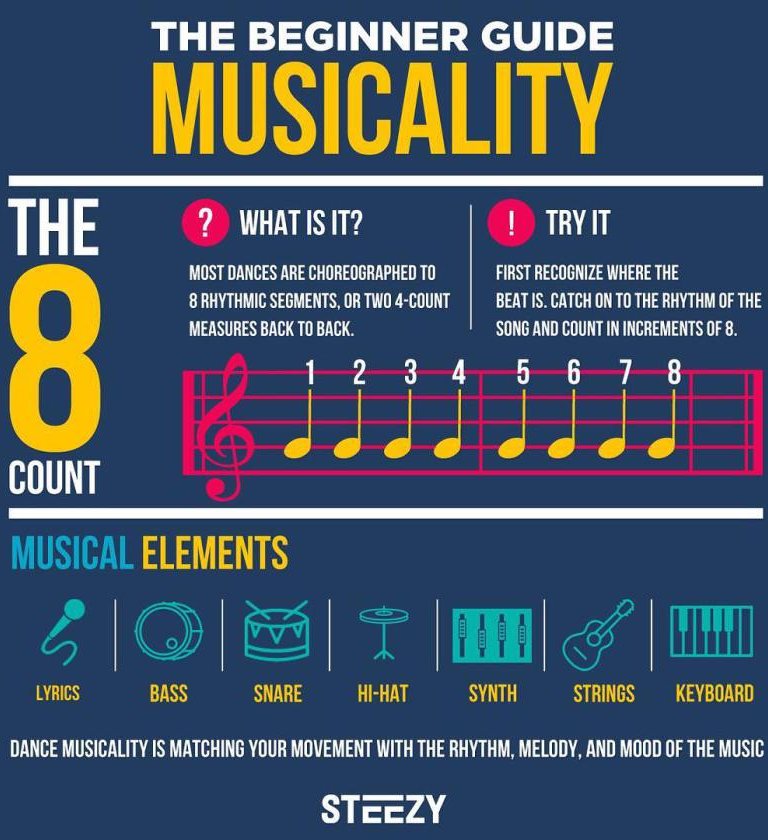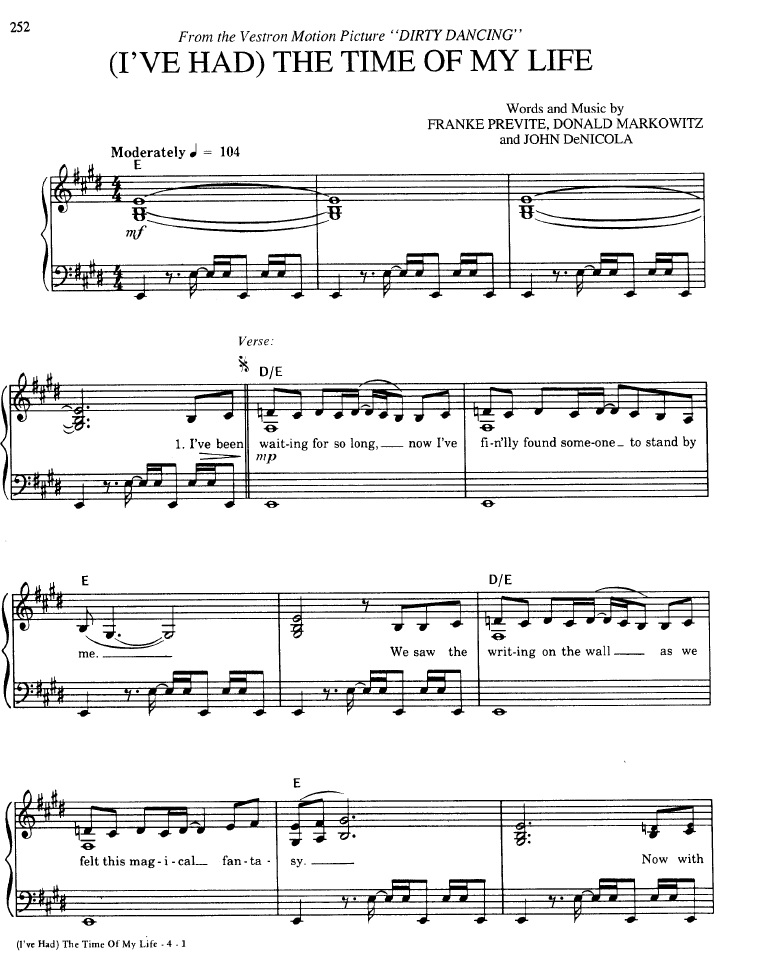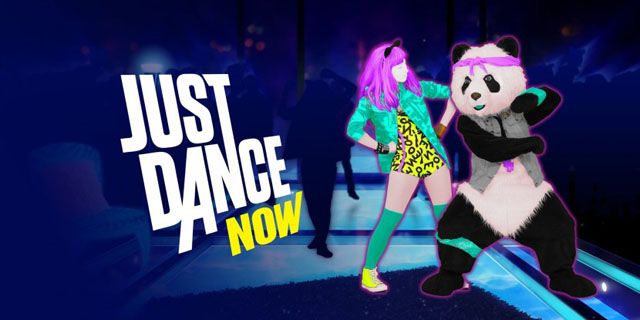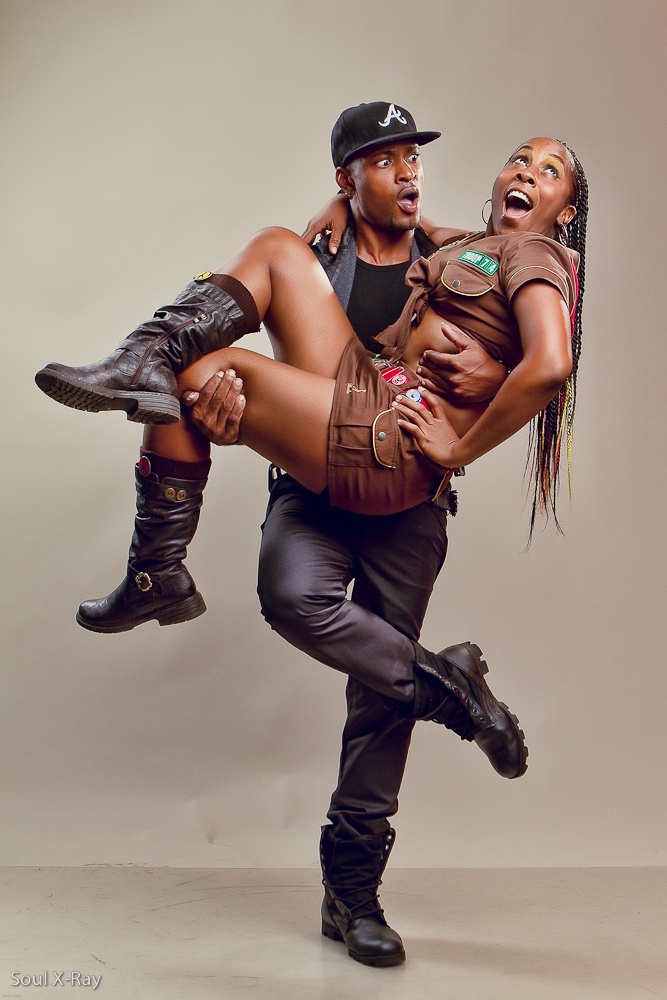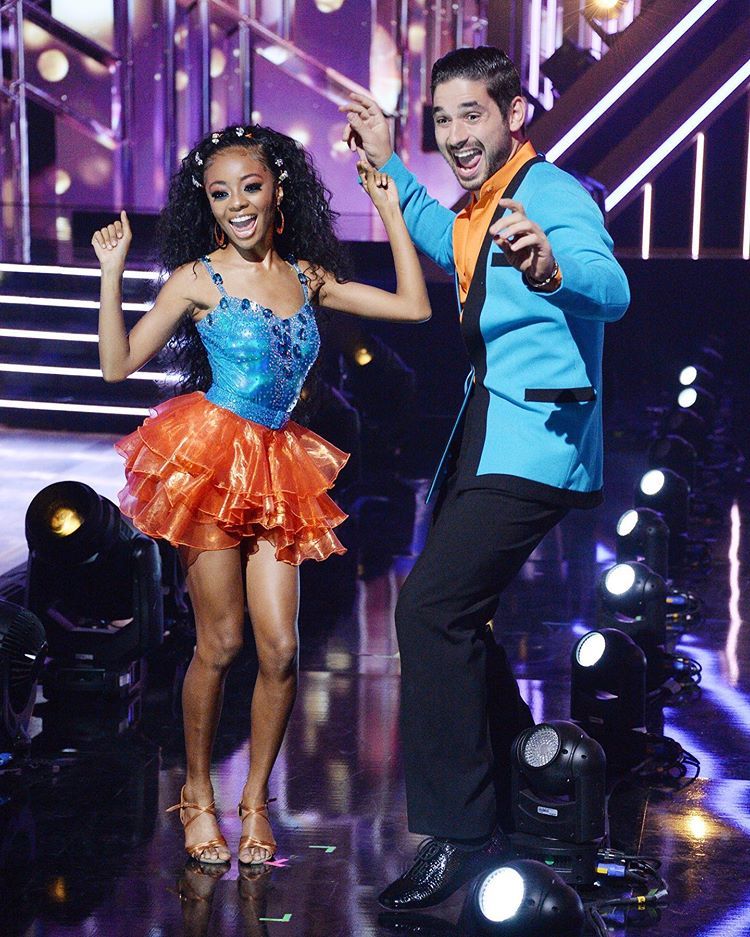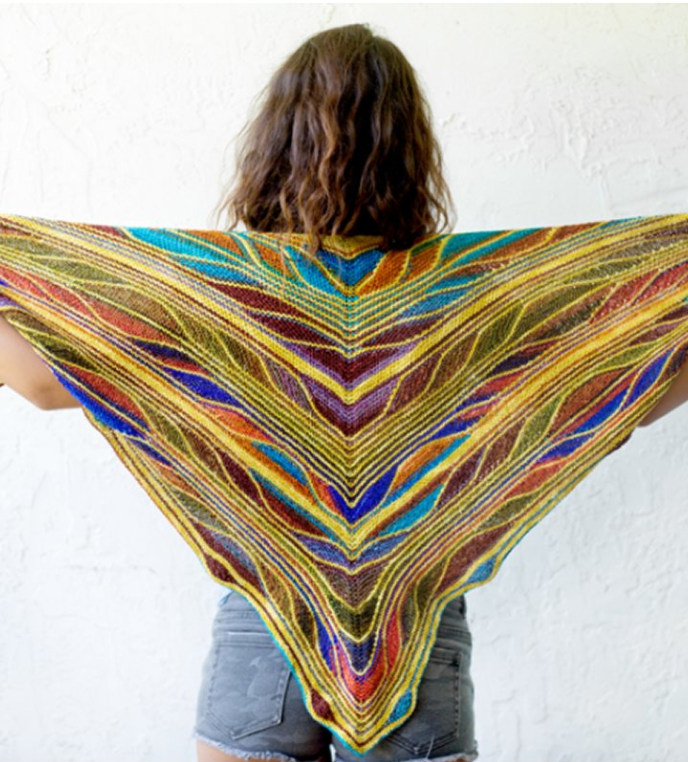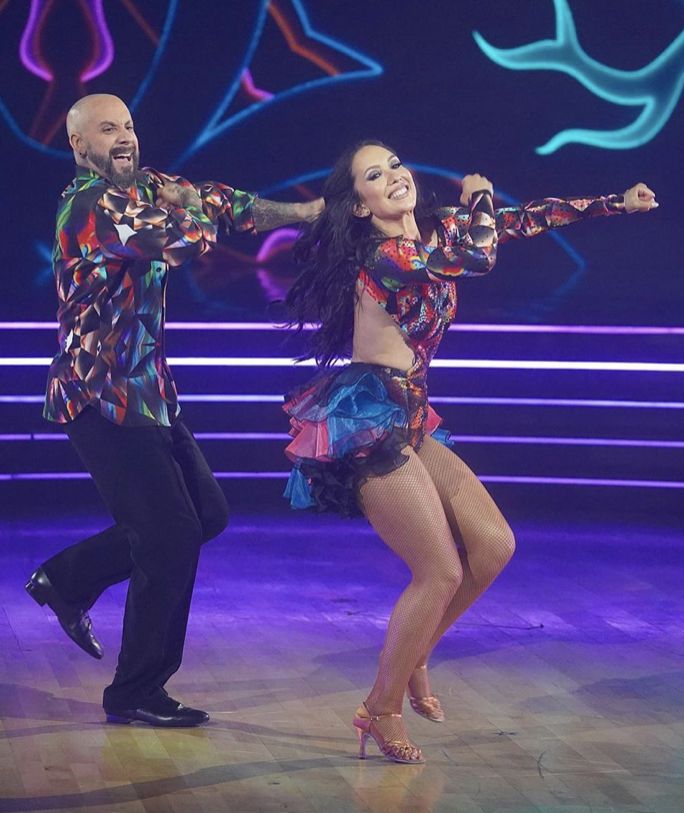Teach me how to dance at a party
How to Dance at a Club or Party
You probably know people who can dance at a club without a second thought.
They just go out, have a few drinks, get down on the dance floor, and have a great night.
Meanwhile, you're seized by panic and insecurity just thinking about dancing at a club.
And whenever you do drag yourself out, you stay glued to the wall and watch everyone else let loose on the dance floor.
But guess what? Those awkward feels are completely normal. And we PROMISE you can overcome them!
Follow these 5 simple steps and never worry about feeling left out again.
1. Find the beat/rhythm as you make your way towards the dance floor
Don't expect yourself to bust out a Step Up routine out of nowhere as soon as you step foot on the dance floor.
This isn't a movie! Start small – really small – by just bobbing your head to the beat.
Do this before you even get on the dance floor. Think of it this way: Music is the one thing that lubricates the whole experience of being at the club.
It sets the mood as soon as you walk in until the moment you walk out. You have to be comfortable with the music first.
So start interacting with the music right away. You can listen and nod your head a you're holding your drink, hanging with a friend, or even sitting down.
This is an easy way to set yourself up for success on the dance floor before you even start dancing.
Your body will already have a handle on the rhythm, so you're more likely to stay on beat by the time you do get your feet steppin'.
Watch this video to learn how to find and count beats in music:
2. Start with a small bounce / groove
Once you're on, or around, the dance floor, start bouncing with your whole body.
Think of this bounce as a bigger version of your head bob. You're still moving to that same rhythm, but now with your knees, core, and chest.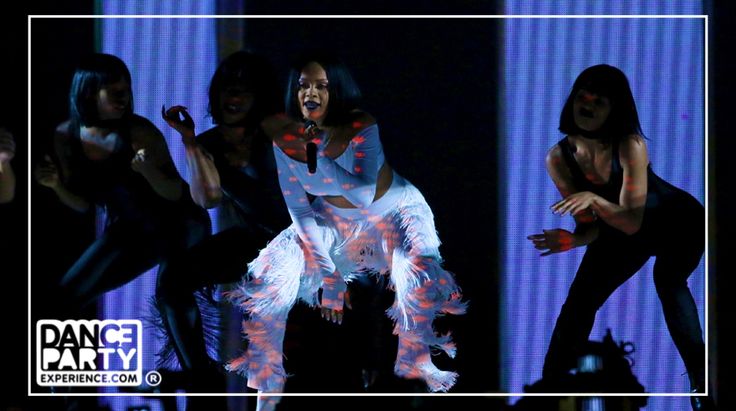
You know how a baby bounces on his knees when he hears a song he likes? Like that, but not as jolt-y.
Ease into those bounces calmly, then slowly build up your energy. This helps make your dancing look more natural.
Carlo Darang describes what a bounce / groove is in this video:
3. Learn simple steps
Got a handle on the music? Great.
Started bouncing with your body? Check. Now, let's get your feet moving!
But wait – you won't know which foot to step where without any practice.
So learn a few basic dance steps before you go to dance at a club.
This video will teach you how to do 3 basic dance moves that work with any song:
Wanna learn more basic party moves like these?
Check out Bianca's "Intro to Dance" program on STEEZY Studio! It'll teach you everything you need to know to get down on the dance floor.
Click here to take the first 4 classes for free.
4. Let loose
Now that you've got the basics of dance down, it's time to put on a few finishing touches to make sure you look comfortable and confident with every move.
These quick tips will help you refine your dancing so you look more loose, groovy, and comfortable:
5. Join the party
By this point, you've got a handle on dancing 1. on beat 2. with your whole body 3. using steps.
But you didn't come to dance at a club to do all this alone!
Once you have that base, dance with the people around you.
If you're in a crowd or a group of friends, then you can play off of their movements and energy.
Mimic the moves your friends are doing, lip sync with them, rap Nicki's entire verse in Motor Sport from memory.
And if the DJ or song lyrics tell you to do something (like put your hands up or jump), then do it!
These are little things you can't predict or practice – remember that you're out to have fun, not to play DDR in your head.
Grinding (or whatever you call it) on someone is its own topic – but whether you're dancing with one person or a whole group of people, the most important thing to do is to... Stay in rhythm!
You and your partner or friends could be doing totally different things. They could be jumping while you're pumping your arms.
She could be swaying side to side as you're 2-stepping.
But as long as you're moving to the same beat, it'll still feel like you're dancing together.
(The closer you physically get, though, the more similar you want your movements to be so that you don't end up hitting each other or creating friction between your moves. Dance with them!)
---
I hope these tips help you kiss those insecurities goodbye!
Follow these 5 steps and you'll realize that it's possible, and actually quite easy, to dance at a club.
You just need the right resources, some practice, and a dash of confidence. ;)
Have fun!
How to Dance At A Basic "Good Enough" Level
- Chris MacLeod, MSW
It's hard to avoid dancing entirely in social situations, especially when you're younger. Arguably, everyone should at least become passable at it. It's not as hard to pick up the basics as you may think, and it's smoother sailing once you can join some friends who want to dance and hold your own.
Arguably, everyone should at least become passable at it. It's not as hard to pick up the basics as you may think, and it's smoother sailing once you can join some friends who want to dance and hold your own.
You don't have to reach a particularly high standard
You just need to be good enough that you can get on the dance floor, blend in with everyone else, not look like an idiot, and not feel overly uncomfortable while you're there. (Lots of people are at least somewhat awkward about dancing. That's why they have to down a few drinks and wait for the dance floor to get busy before they step out on it.)
You don't have to look like someone out of a music video. You've just got to be decent enough to get by. Being better than the minimum never hurts of course, but just knowing the basics will put you way ahead of all the non-dancers out there.
If you're straight, try not to worry too much about what the opposite sex thinks. They don't have ultra-picky standards
Straight people don't purely dance to impress the opposite sex, but it is often something they think about.
For guys
Generalization time. Women and men have different ideas of what a good dancer is. Guys often see dancing as a skill to show off. Being better than other dudes on the dance floor is important to them. Their typical image of a "good dancer" is a gymnastic break dancer doing a bunch of flips, or a guy doing a fancy, fluid Popping & Locking routine. A woman's concept of a good dancer is a closer to a passably moving guy who looks comfortable, confident, and like he's having fun.
When a woman wants to dance with you, all she really wants is that...
- You are there with her
- You are dancing with her
- You are not dancing horribly
- You are not being too forward and creepy
For women
This totally sounds like a simplistic stereotype, but most of the time when you're dancing with a guy he's not making a detailed critique of your style. He's probably just thinking, "Yay! I'm dancing with a woman!" Or if he's watching you dance from farther away, he's likely thinking, "She seems like someone I might want to talk to. I wonder if she'd shoot me down though..." Even if he seems like the most genuinely suave, confident guy ever, he's probably still thinking like that on some level. He's probably fifty times more worried about how his dancing looks to you than the other way around. Even he's an amazing dancer and you're not, he likely isn't holding it against you.
I wonder if she'd shoot me down though..." Even if he seems like the most genuinely suave, confident guy ever, he's probably still thinking like that on some level. He's probably fifty times more worried about how his dancing looks to you than the other way around. Even he's an amazing dancer and you're not, he likely isn't holding it against you.
(That was from my observations as a straight guy. I'm not gay so I won't try to write from their perspective, but I can't imagine their standards for dance partners are radically different.)
Try not to worry too much about what strangers think
Easier said than done, but don't use up too much mental energy fretting about how random bystanders are judging you. Occasionally people will snicker and point to people who are dancing because they're really just too nervous to do it themselves. Random dudes sucking on their beer aren't your audience. Also, like the point above mentioned, your average dancer is more preoccupied with how they look than anything.
If there's one thing to keep in mind it's to be toned-down and low key
Don't be a spaz and try to pull off some fancy moves unless you 100% know you'll look good doing them. It's better to reel yourself in. Over reaching and flailing around is worse than blending in and being a bit boring and unoriginal. Don't feel you have to pull off tons of new moves every second and put on a show for everyone either. It's okay to dance in a simple, repetitive way and just enjoy your friends' company.
Acquire a basic, reliable dancing 'core'
You know when you're watching a movie or TV show and there's a scene set in a dance club, how the extras in the background will often to be dancing in a kind of simple, nondescript way? That's the 'core' I'm talking about. If you know how to do that, then in a lot of situations that's actually all you need. However, if you want, you can later choose to build off your base and make your style more fancy.
To get that core stand in front of a mirror with some not-too-fast music on, or just read along and imagine you're doing the following:
- To dance you've got to move your body in time to the beat of the music.
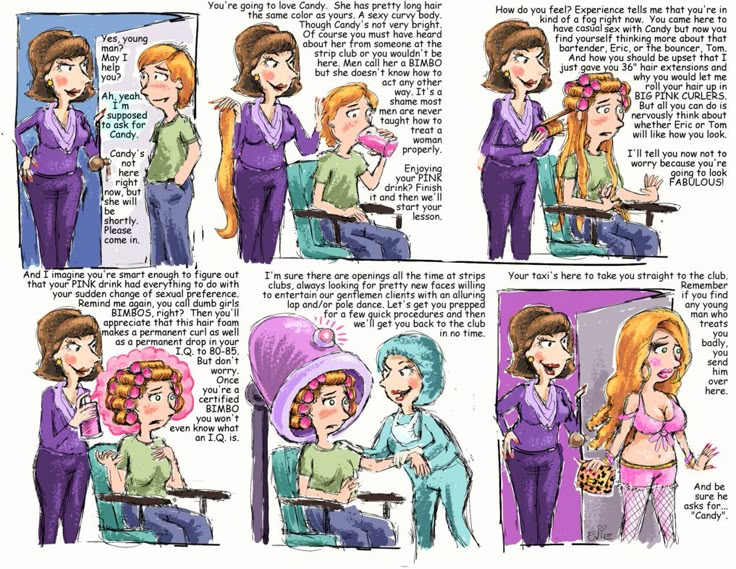 The most basic newbie mistake you can make is to move out of sync with the beat. Don't know the beat I'm referring to? Put on a song and listen for the underlying, repeating thump-thump-thump pattern. Every style of music has a different speed. It doesn't take much practice to learn how to hear it.
The most basic newbie mistake you can make is to move out of sync with the beat. Don't know the beat I'm referring to? Put on a song and listen for the underlying, repeating thump-thump-thump pattern. Every style of music has a different speed. It doesn't take much practice to learn how to hear it. - Okay, you're just standing there in front of the mirror with some song playing. Now try moving your arms back and forth to the beat slightly, while keeping your legs ramrod straight. You'll notice that looks totally off. So the next most basic thing you've got to do is bounce up and down on your knees. So keep everything else still, and just move your knees up and down to the music.
- That still looks weird, since you're just going up and down like a piston. So rotate your torso a bit in time with your knee movements, a little like you're skiing. Keep your torso fairly loose and relaxed.
- That's looking better, but your arms are still stiffly hanging at your side.
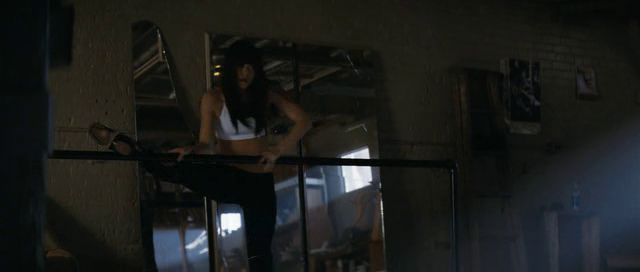 So try relaxing them a bit and let them swing up and down with your knee bends and torso rotations.
So try relaxing them a bit and let them swing up and down with your knee bends and torso rotations.
Once you're standing in one spot, bouncing on your knees, turning your torso a bit, and moving your arms somewhat, that's about the absolute bare minimum you can do to be considered dancing. Like I said, sometimes that's all you need. If you didn't know how to dance at all, and stopped right here, that's a lot better than nothing.
However, while still staying in the realm of dancing in a super generic 'core' way, you can do little things to spice up the bare minimum:
- Don't just limply swing your arms, get your shoulders into it.
- Take steps side to side, or back and forth.
- Mix up your arm movements.
- Nod your head.
- Do little pivots or twists on one foot, or both feet.
- Don't just slightly rotate your torso, move it back and forth, or from one side to the other.
- Pick up one foot ever so slightly, then the other, to kind of march in place.
 Don't overdo the movement and look like a robot, just move your feet a tad.
Don't overdo the movement and look like a robot, just move your feet a tad. - Mix up the possible arm, torso, and leg variations. Find a combination that looks good and do it for a while, then switch to another one. Don't change things up to the point where you're doing something new every half a second. That looks too scattered.
At this point you're hardly going to win a dance competition, but you're at the level of those movie extras, and 75% of the people you'll see out at a bar. At this point you really could develop no further in your dancing ability and be able to get by on a dance floor for the rest of your life.
The thing with this basic core is that it's pretty adaptable to the standard kinds of music you'll come across. If you're dancing to Hip Hop, just make all your movements a little more Hip Hop-ish. If you're dancing to retro 80's Pop, just make all your moves a little more cheesy and energetic.
Add some more fancy moves and sequences onto your core if you want to
If you dance in a basic way you'll get by, but you won't stand out a ton.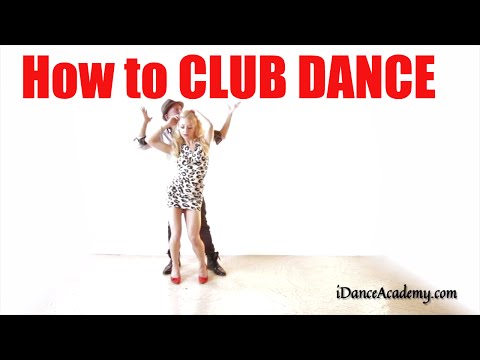 If you want to look a little slicker you can start adding in some canned movements, or sequences of moves. There's more of a Risk/Reward thing going on at this stage. You've got to work at it more as well. Dancing generically is safer and easier. If you try to pull off some awesome routine and bungle the execution you'll look clueless or goofy. You need to practice to make sure you look good. Some places to learn new moves are:
If you want to look a little slicker you can start adding in some canned movements, or sequences of moves. There's more of a Risk/Reward thing going on at this stage. You've got to work at it more as well. Dancing generically is safer and easier. If you try to pull off some awesome routine and bungle the execution you'll look clueless or goofy. You need to practice to make sure you look good. Some places to learn new moves are:
- By watching strangers dancing at a club and stealing ideas from them.
- By watching your friends dance.
- By watching movies or music videos.
- Through online video tutorials.
- Through dancing-oriented video games.
- By experimenting and trying to come up with some moves of your own.
- By taking an actual class.
The best way to learn is to just practice
If you get into the habit of dancing around at home in the spare moments you're listening to music it won't be long before you start to get the hang of things. After that the more time you put in, the more you'll refine your style.
After that the more time you put in, the more you'll refine your style.
Get in front of a mirror, put some good music on, and start dancing to it in the basic way I mentioned above. Remember, if your instinct is to jump around a lot or be a bit spazzy, consciously tone yourself down. Try to get comfortable with the typical, boring way of dancing first. A lot of the time on actual dance floors you won't have that much room anyway, so if you only practice moves that requires a lot of space you'll be put in an awkward spot when you end up somewhere more packed.
One way to deliberately practice is to try working on one aspect of dancing at a time, then putting the pieces together. This may not look good in the moment, but it'll let you concentrate on and isolate certain aspects of how you move. So you might keep everything else fairly still, and only try out different arm movements, or ways of moving your torso. Or you could try different ways of stepping back and forth, or moving only one leg at a time.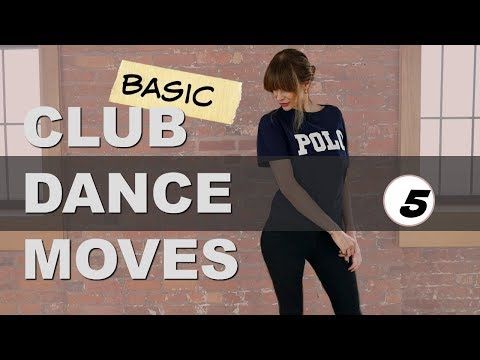
Article continues below...
Practice different dancing scenarios
Aside from figuring out how to move your body, there are different situations you'll find yourself dancing under:
Dancing on a dance floor where you have a lot of room
This is the easiest as you have all the space you need, and you can do somewhat more showy stuff if you feel like it. Sometimes the ocean of space can feel like too much to work with or make you feel exposed and self-conscious though.
Dancing on a crowded dance floor
Here your movements are really restricted. When you're practicing make sure to keep your feet rooted to the ground and don't swing your arms out too much. Try to make your movements look good anyway.
Dancing close and face to face with someone else
The issue here is knocking knees and not being able to extend your arms too far in front of you. Try dancing really close to a wall to get an idea of what it's like. Or you can try dancing really close to a full length mirror. It's totally goofy looking, but it's still a good way to get used to the feeling of being near someone.
Or you can try dancing really close to a full length mirror. It's totally goofy looking, but it's still a good way to get used to the feeling of being near someone.
Dancing with a partner
Here I'm referring to partner dancing in an informal, improvised way, not doing a specific dance like the Tango. Of course this is something that you can't practice on your own super effectively. Still, you could put your hands out in front of you like you're holding someone's waist or shoulders and practice moving within that restriction. I don't blame you if you don't want to do this. It's definitely a bit silly. Still, if the idea of dancing with someone makes you uncomfortable, practicing like this can take the edge off.
More practical advice would be to take a salsa, swing, or ballroom dancing class, asking your friends to teach you to dance, or practicing with your partner, if you're seeing someone. If it doesn't make you anxious, you could even try going to a club and trying to dance with someone you meet there.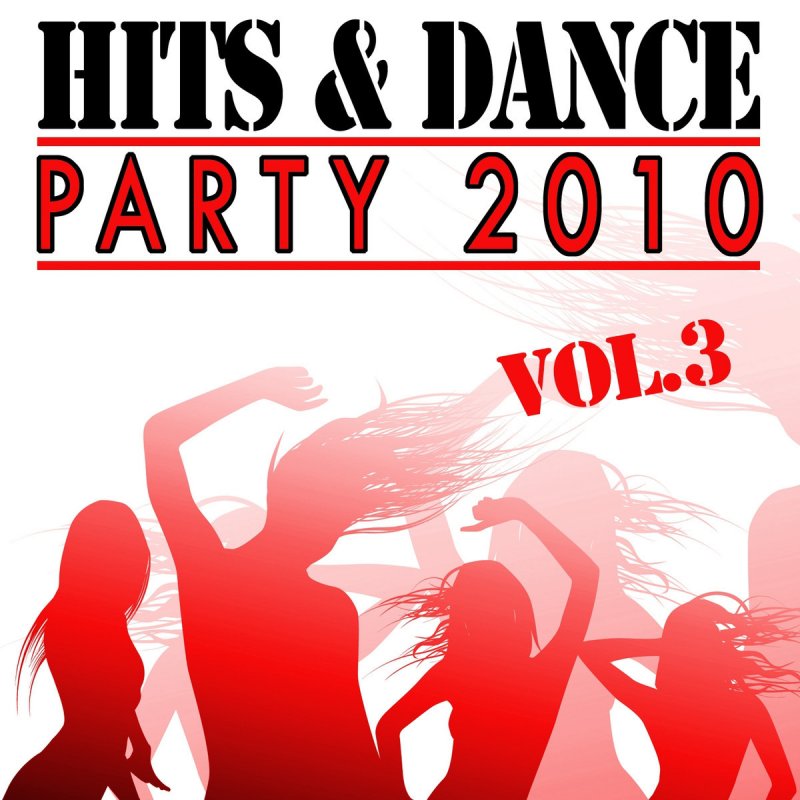
Non-verbal communication is important as well
Body language plays a role in dancing too. It would look strange if someone was dancing to a 70's funk song with the mannerisms and facial expressions of someone listening to 90's Gangsta Rap. You don't want to be too exaggerated or hammy with your body language, but it is something to subtly bring into the equation. The other basic thing about body language is that sometimes the difference between someone who looks good and so-so on the dance floor is their non-verbals. If someone looks uncomfortable and bored, they may come across as dancing poorly. The same movements with some energy and confidence can look fine.
Dancing is a physical activity
Simple tip here. The better shape you're in, the easier dancing will be. You'll be able to do more, have more energy, and keep at it for longer. Basic things like aerobic fitness, flexibility, and some endurance in your legs and torso help.
Dancing to an unfamiliar style
For the poppy dance music you most typically hear in bars and clubs you can usually get away with dancing in the generic style I outlined earlier. Though if you've ever been to a club that caters to a different scene you'll know other genres of music have their own types of dancing.
Though if you've ever been to a club that caters to a different scene you'll know other genres of music have their own types of dancing.
If you're in one of these places, it's not the end of the world if you go ahead and dance the usual generic way, and just try to make your movements conform somewhat to that subculture's style. You won't fit in perfectly, but no one is going to run you out of the joint. However, if you're interested in dancing to that type of music more in the future, it's obvious that you'd want to try to learn its more specialized moves.
A semi-warning about dance classes
Without a doubt you'll learn a lot if you a take a class, but sometimes people get a shock when they then go to a club and have to dance spontaneously. They can't just start swing dancing or bust out a 14-step choreographed Hip Hop routine. There are people who have taken years of dance classes, but they're inhibited when it comes to dancing at clubs. They feel lost, put on the spot, and like they're expected to perform.
Dancing badly on purpose
I think there's a good time and a bad time to dance in a poor or silly way as a joke. The bad time to do it is when you're not comfortable or experienced with dancing, and you dance like goofball to avoid having to do it for real. People tend to see through this, and any humor that comes out of it only has a shelf life of a minute or so.
The good time to do it is when you're with some friends, you all know how to dance properly, and you just throw in the occasional campy movement or routine as a way to joke around and have more fun. It comes off well in this situation because everyone realizes you're doing it because you choose to, not because you're trying to hide how ill at ease you feel.
Drinking to loosen yourself up
Lots of people need to get some alcohol in them before they feel confident enough to hit the dance floor. In a perfect world everyone would feel comfortable dancing stone cold sober, but realistically some of us need a little extra help. Within reason I think this is fine.
Within reason I think this is fine.
When alcohol tends to be helpful is when someone knows how to dance half-decently, but are just a smidgen reserved - most people basically. When drinking tends to backfire is when someone doesn't really know how to dance, and never tries unless they're totally hammered. The results can be pretty sloppy. Things can also get embarrassing if someone is just learning how to dance and is inclined to be spazzy. The alcohol tends to bring those tendencies to the surface.
In conclusion
This is a trite thing to say, but despite everything you've just read, you should just enjoy yourself and not over analyze things. Have fun and don't worry about what other people think of you. Blah Blah Blah. The end.
How to dance at a party: advice from British GQ editor-in-chief Dylan Jones
The main thing to remember when throwing yourself on the dance floor: no one is looking at you. Do not be afraid that you will be laughed at and that everyone is just waiting for you to get tangled in your own feet. Believe me, no one is interested in this, especially if you behave decently.
Believe me, no one is interested in this, especially if you behave decently.
In the event that your dancing experience is zero - or if you once tried and did not like it - you need to learn two simple truths first. Firstly, women like it when a man dances well, so if you are a complete layman in this matter, you should strain yourself. Secondly, no one expects great things from you in all your endeavors. Personally, I am able to dance to anything, but when a DJ puts on I'm So Excited by The Pointer Sisters or something in the style of drum and bass, I immediately leave the dance floor. Not because I don't like such compositions - although at my age it would be forgivable - but because they are difficult to dance to. Not everyone can rock to any song, so if it has too many beats per minute, or a particularly jagged rhythm, or is too slow (like Just Be Good to Me by the SOS Band), feel free to go to the bar. Don't like reggae? Run to the toilet. Can't help laughing at the new Coldplay hit? Sit down.
If you don't know how to dance at all, but circumstances require it, move by feel. Do not kick your legs - work with your body; bending your elbows, squirm with dignity to the beat of the music. It's really easy! Soon you will become bolder and begin to vary your dance moves; do it in proportion. No one expects you to turn into John Travolta - all his exploits in "Saturday Night Fever" were staged by a professional choreographer, so you should not go out of your way.
A few more important points. Don't slow dance unless you're holding a woman in your arms. Don't try to act like Bruce Springsteen from the Dancing in the Dark video or Kevin Bacon from the movie Loose and dance like a rocker, throwing out your arms and legs at the same time, like a drunken doll. It would also be nice to learn some traditional dance - for example, tango. The easiest way to learn is the twist, which can be danced to anything from Chubby Checker to George Michael's Faith. Put your foot slightly in front of you and start spinning on it, wobbling your hips; then “screw” yourself into the floor without bending your back, and then “unscrew” back up in the same way.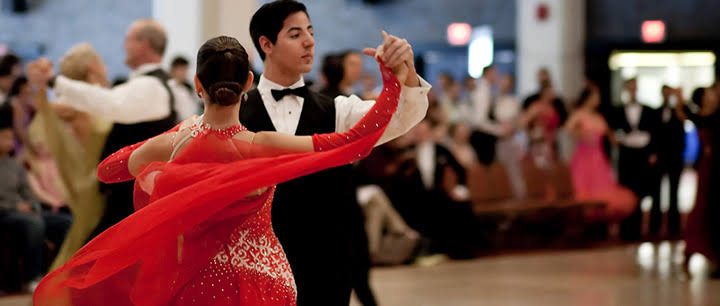
If you want to learn something spectacular, try the Highland Fling, one of the oldest Scottish dances. Raise your left hand and use it to draw the letter "c" above your head. Place your right hand on your thigh so that the thumb is pointing down and the other fingers are pointing back. With the emphasis on the left leg, stretch the right leg all the way and make a quarter-turn jump. Place your right foot behind the ankle of your left and again jump in a quarter turn, stretching your right leg as far as possible to the right side. Then do another quarter-turn jump, keeping your right foot in front of your left ankle (toes pointing to the floor). Repeat the movement, changing the right leg to the left and vice versa.
When the song ends, bow gracefully with a George Clooney grin. And remember: courage and recklessness are not the same thing.
Photo: Mr Jones' Rules for the Modern Man © 2006 Dylan Jones. Published with permission from Hodder & Stoughton. Illustration: Mitt Roshin
Do you check your mail often? Let there be something interesting from us.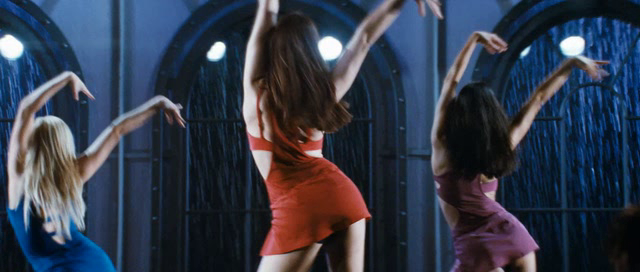
"Horizon" learned the difficult moves of the pole dance | ETV+
What is the difference between pole dancing and striptease? Difficult movements were studied by the correspondent of "Horizon".
Sexy, feminine, passionate: the pole dance cannot but bewitch. Despite the fact that half-dance (pole dance) has been developing as a type of acrobatics since the 2000s, this dance is still considered a provocative sport, because the first association that arises at the sight of a pole is strip clubs. According to representatives of this type of dance, it is wrong to deny the connection between half-dance and striptease, because this leads to the stigmatization of sex workers.
"This is not a stereotype. If you look at history, the pylon came from striptease bars. At first it was generally like that people came to the striptease club during the day. And enthusiastic people who were interested in physical training began to ask strippers to teach them," said coach Diana Harten.
Diana adds that not all half dancers are strippers and not all strippers are half dancers. Striptease and half-dance have different goals, and this is clearly seen in the movements of the dancers.
"About two years ago, we went with the girls to a strip club. And we noticed that the girls there move differently, they have a different goal. There, of course, when people come to watch, they don't appreciate the technique, they don't look at how your socks are tight, are you good at the flag, you can do it without tricks," Diana explained.
Diana herself has been involved in half-dance since 2014, and, according to her, since then this sport has developed tremendously in Estonia. For example, earlier classes were not divided into levels, and an expert with many years of experience and an absolute beginner could be in one training session. Now there is no such problem.
"I went to one dance event where I saw Diana. I saw how cool she moves and dances. And I decided that I also want to.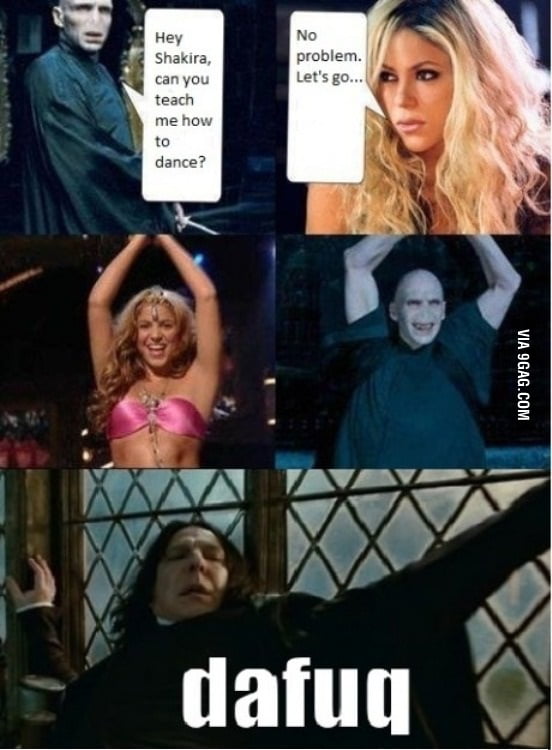 how difficult it is,” said the dancer Stasya.
how difficult it is,” said the dancer Stasya.
Pole dance is divided into three types: art, where the dance is shown as an art; fitness, where most attention is paid to complex elements; and exotic, which is characterized by plasticity and eroticism.
"It's a half-dancer's nightmare when you're in a dressing room and you get stuck because you have biceps. That is, if you do only acrobatics, your arms will develop, the entire upper department. And if you do something exotic, then legs, buttocks and everything else will develop," Diana emphasized.
A distinctive feature of the exotic is high heels on the platform. No matter how your own heels seem, in which girls go to the office or to parties, dancing half-dance in them can be not only uncomfortable, but also traumatic. That is why in the wardrobe of every half-dance dancer there should be strips - special shoes designed to perform this dance.
"Strips are high not due to the rise of the toe, but due to the platform.
